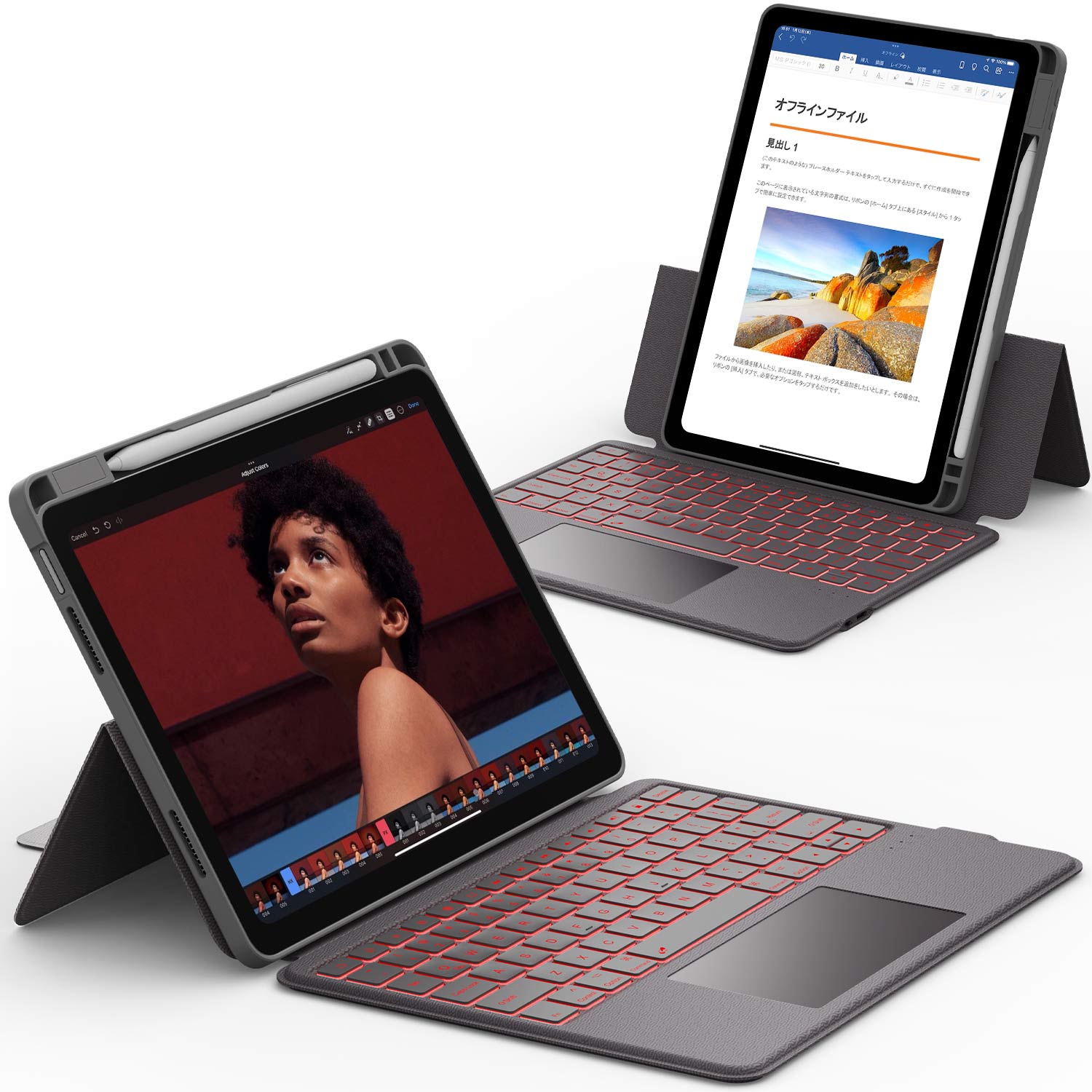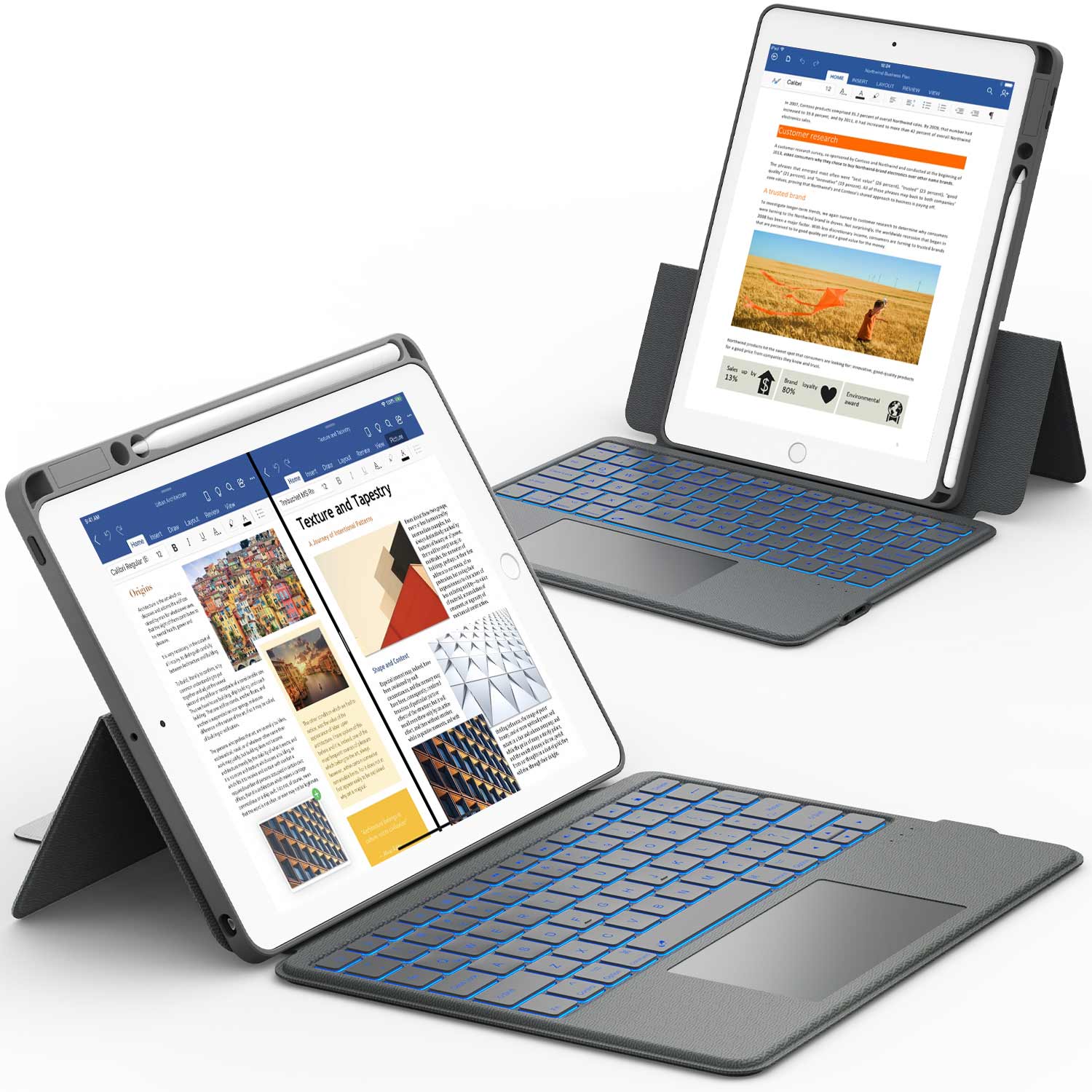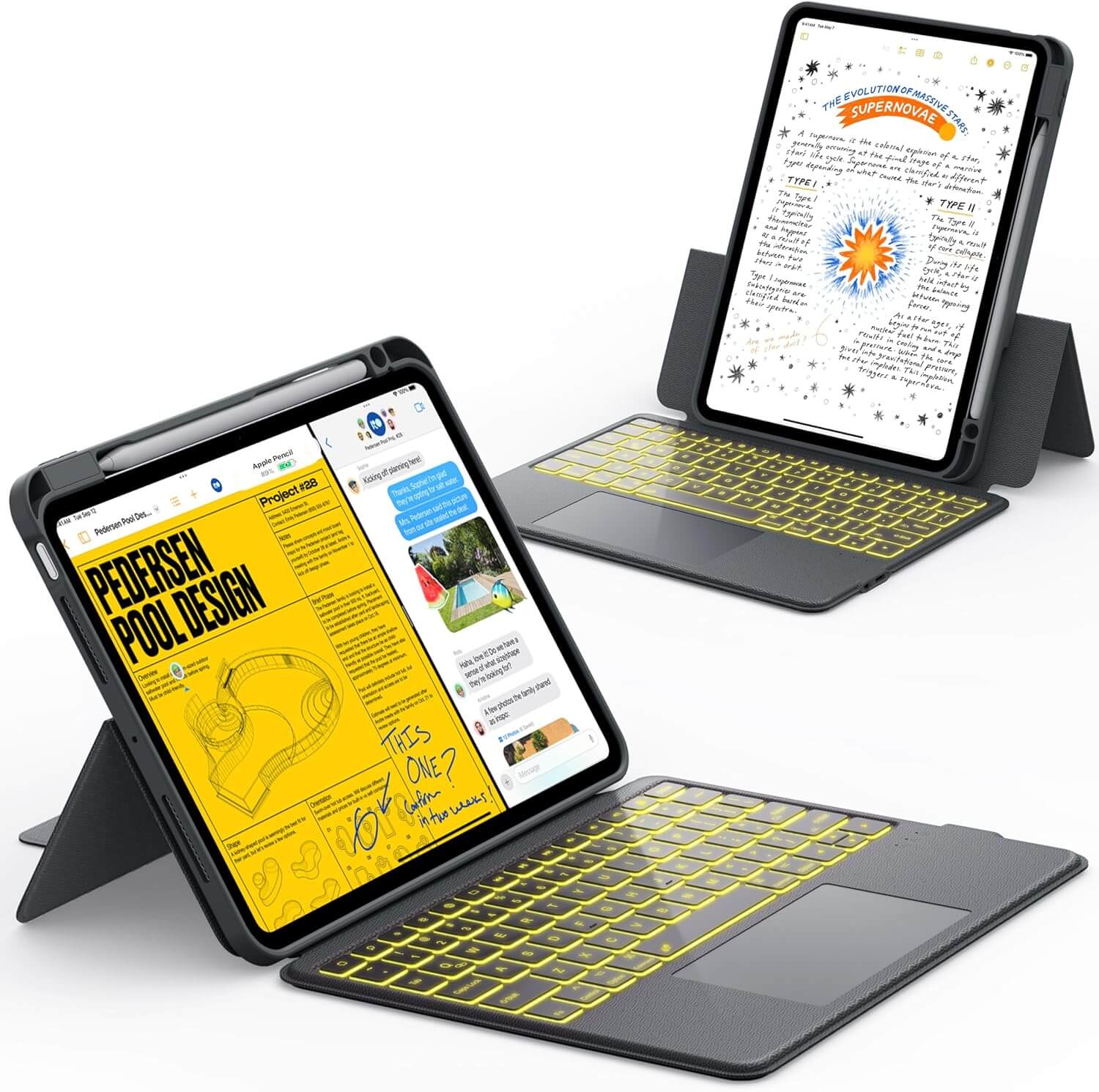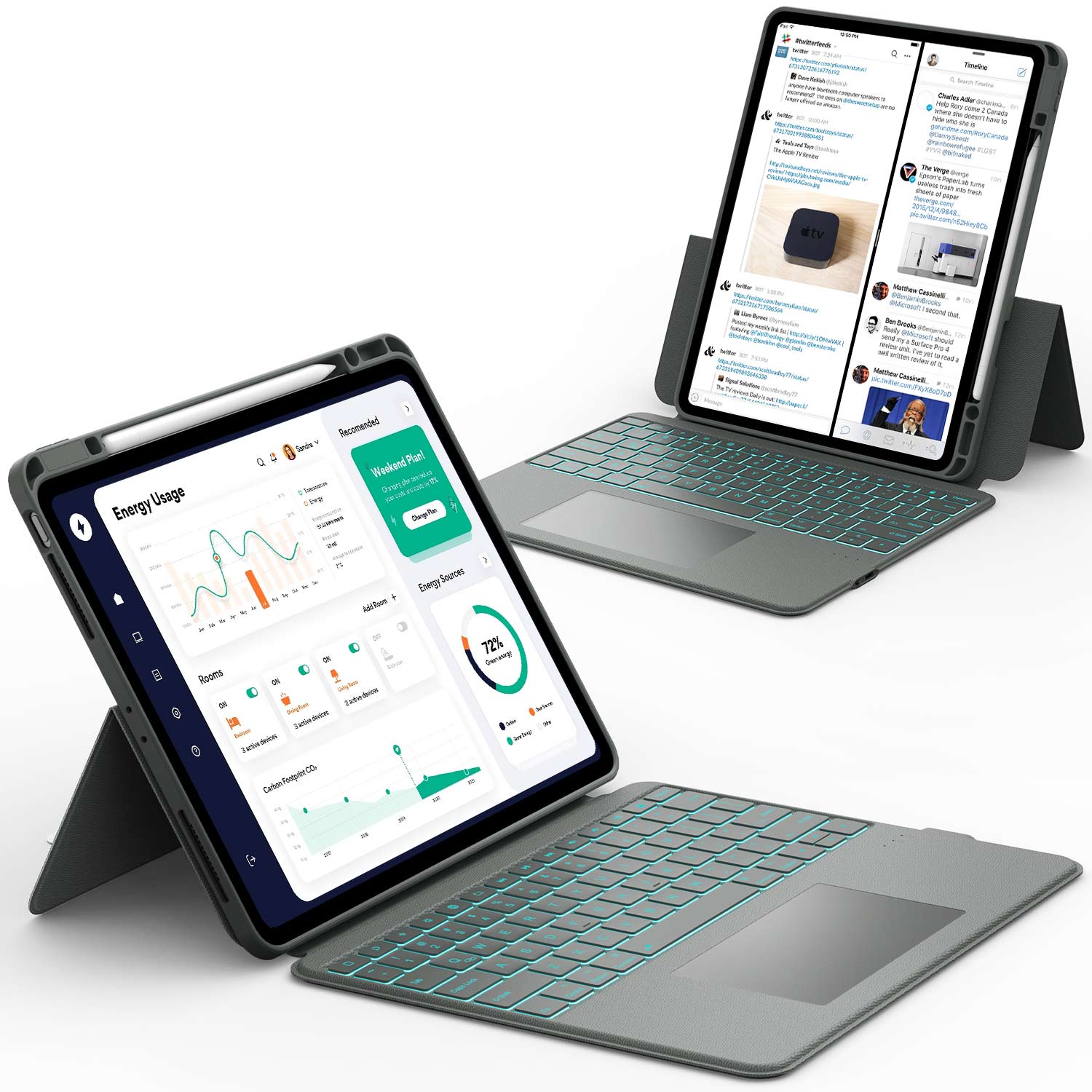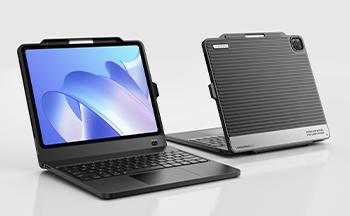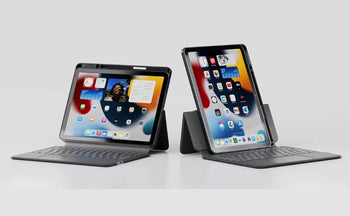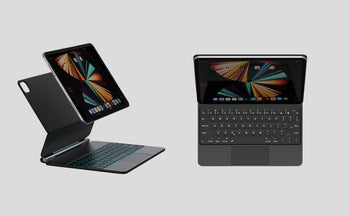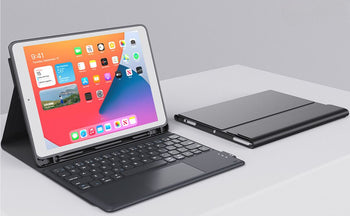Choosing the right iPad as a college student can be a bit overwhelming with all the options out there. You want something that fits your needs, is easy to carry around, and doesn't break the bank. In this guide, we'll help you figure out how to choose the best iPads for college students by breaking down what to look for, which models might work best, and how to make the most of your new device.
Key Takeaways
- Identify your specific needs based on your major and coursework.
- Set a budget that works for you, considering both the iPad and accessories.
- Look for models that balance performance with portability.
- Consider accessories like keyboards and Apple Pencils to enhance functionality.
- Explore budget-friendly options like refurbished iPads to save money.
Identifying Your Needs as a College Student

Before you even think about which iPad to buy, you gotta figure out what you actually need it for. College isn't one-size-fits-all, and neither are iPads. What works for a film student probably won't cut it for someone in engineering. Let's break it down.
Assessing Your Major Requirements
Okay, so what's your major? Seriously, this is the first question. An English major might be fine with the base model iPad for writing papers and reading ebooks. But if you're in architecture or graphic design? You're gonna need something with more power and a bigger screen. Think about the software you'll be using. Does it require a lot of processing power? Will you be doing a lot of visual work? Some majors might even require a laptop instead of a tablet, so double-check that before you commit.
Understanding Your Budget
Let's be real, college is expensive. Textbooks, tuition, ramen noodles... it all adds up. Setting a realistic budget for your iPad is super important. Don't just look at the initial price tag. Factor in accessories like a keyboard and Apple Pencil (which, let's face it, you'll probably want). Also, consider whether you need AppleCare+ for accidental damage. Can you afford the latest iPad Pro, or are you better off with an older model or the iPad Air? There are also options like refurbished iPads, which can save you some serious cash.
Considering Portability and Weight
Are you the type to lug your backpack everywhere, or do you prefer to travel light? The size and weight of your iPad matter. The iPad mini is great for portability, but the smaller screen might not be ideal for long study sessions. The iPad Pro offers a larger display, but it's also heavier. Think about where you'll be using your iPad most often. In class? At the library? On the bus? A lighter, more compact model might be a better choice if you're always on the go.
Choosing the right iPad involves balancing your academic needs, financial constraints, and lifestyle preferences. It's about finding the sweet spot where functionality meets affordability and convenience.
Evaluating iPad Models for Academic Use
Choosing the right iPad for college can feel overwhelming. There are so many models, each with its own set of features and price points. Let's break down the key things to consider when evaluating different iPads for academic use.
Comparing iPad Generations
Apple releases new iPad generations regularly, and each one usually brings improvements in performance, features, and design. Newer generations often have faster processors, better displays, and improved battery life. However, they also come with a higher price tag. Consider whether the latest features are essential for your needs, or if an older generation iPad can still meet your requirements at a lower cost. For example, the 11th-generation iPad is a solid choice for many students.
Here's a quick comparison of some recent iPad generations:
| Generation | Processor | Key Features | Considerations |
|---|---|---|---|
| iPad (9th Gen) | A13 Bionic | Affordable, reliable | Older design, less powerful |
| iPad (10th Gen) | A14 Bionic | Modern design, USB-C | Higher price than 9th Gen |
| iPad Air (5th Gen) | M1 | Powerful, lightweight | Good balance of price and performance |
| iPad Pro (M2) | M2 | Top-of-the-line performance, ProMotion display | Most expensive |
Understanding Storage Options
Storage is a crucial factor, especially if you plan to store a lot of notes, textbooks, and media on your iPad. Consider how much storage you realistically need. Cloud storage is an option, but it requires a reliable internet connection.
Here's a general guideline:
- 64GB: Suitable for basic note-taking, web browsing, and light app usage.
- 128GB: A good balance for most students, allowing for more apps, files, and media.
- 256GB or more: Ideal for students who work with large files, such as video editing projects or extensive digital libraries.
It's generally better to overestimate your storage needs rather than underestimate them. Running out of storage space can be a major inconvenience, especially during exams or when working on important projects.
Assessing Performance and Battery Life
Performance and battery life are critical for academic use. A faster processor ensures smooth multitasking and responsiveness, while longer battery life allows you to work for extended periods without needing to recharge. If you plan to use your iPad for demanding tasks like video editing or graphic design, consider an iPad with a more powerful chip, such as the M1 or M2. Battery life is usually measured in hours of video playback or web browsing. Aim for an iPad that offers at least 8-10 hours of battery life for all-day use. If you are looking for an upgrade, consider the M3 iPad Air.
Best iPads for Note-Taking and Study

Choosing the right iPad for college really boils down to how you plan to use it, especially when it comes to note-taking and studying. Some models shine in specific areas, so let's break down the best options.
iPad Pro for Advanced Users
If you're a student who needs serious power, the iPad Pro is the way to go. It's the most capable iPad, offering top-of-the-line performance for demanding tasks. This is the one to pick if you're in a field like graphic design, video editing, or anything that requires heavy processing. The Pro's screen is amazing for viewing detailed diagrams or working with complex data. It's definitely an investment, but if you need the best, this is it.
iPad Air for Versatility
For most college students, the iPad Air hits the sweet spot. It's powerful enough to handle pretty much anything you'll throw at it – note-taking, research, writing papers, streaming videos – without the premium price tag of the Pro. It's also lighter and more portable than the Pro, which is a big plus when you're lugging it around campus all day. The screen is still great, and it works perfectly with the Apple Pencil and Smart Keyboard.
iPad Mini for Portability
If portability is your top priority, the iPad Mini is hard to beat. It's small and light enough to slip into almost any bag, making it perfect for taking notes in cramped lecture halls or reading on the go. While it's not as powerful as the Air or Pro, it's still plenty capable for most student tasks. The smaller screen might not be ideal for everyone, but if you value convenience above all else, the Mini is a great choice.
Consider the iPad Mini if you want something that feels more like a notebook than a tablet. It's super easy to carry around and great for quick notes or reading articles between classes.
Accessories to Enhance Your iPad Experience
Your iPad can be so much more than just a tablet for watching videos. With the right accessories, it can become a powerful tool for productivity and creativity. Let's explore some must-have add-ons to get the most out of your iPad during your college years.
Choosing the Right Keyboard
A keyboard can seriously boost your note-taking and writing speed. There are a ton of options out there, from Apple's own Magic Keyboard to third-party Bluetooth keyboards.—like the ultra-slim Chesona iPad Keyboard Case, which not only protects your iPad but also turns it into a mini laptop with a built-in trackpad and adjustable stand. It’s a student-friendly option that’s budget-conscious and highly portable. Consider what's important to you: portability, key travel, and whether you want a built-in trackpad. A good keyboard can transform your iPad into a laptop replacement, especially for long writing assignments.
Using the Apple Pencil for Note-Taking
If you're a visual learner or just prefer handwriting your notes, the Apple Pencil is a game-changer. It's great for sketching, annotating PDFs, and taking handwritten notes in class. The pressure sensitivity and tilt recognition make it feel surprisingly natural. Just make sure you get the right generation of Apple Pencil for your iPad model!
Finding Protective Cases and Stands
Let's face it, college life can be rough on your gadgets. A good case will protect your iPad from scratches, bumps, and accidental drops. And a stand can make it easier to watch videos, read, or video chat hands-free. Here are some things to consider:
- Durability: Look for cases made from sturdy materials like TPU or polycarbonate.
- Functionality: Some cases have built-in stands or keyboard attachments.
- Style: Choose a case that reflects your personality.
Investing in a quality case and stand is a small price to pay to protect your valuable investment and make your iPad more comfortable to use in various situations.
Budget-Friendly iPad Options for Students
Best Value iPads
Let's be real, college is expensive. Textbooks, ramen, and the occasional (or frequent) coffee run add up fast. So, finding an iPad that doesn't break the bank is a must. The sweet spot is finding a balance between price and performance. You don't need the latest and greatest to take notes, write papers, and stream Netflix.
- Look for iPads that are a generation or two behind the current model. They still pack a punch but come with a significantly lower price tag.
- Consider the storage you really need. Do you plan on downloading tons of movies and games, or will you mostly be using it for schoolwork? Less storage equals less money spent.
- Keep an eye out for sales and promotions, especially around back-to-school season. Retailers often offer discounts on iPads for students.
Refurbished and Used iPads
Don't shy away from the refurbished market! Apple-certified refurbished iPads come with a warranty, so you can rest assured that you're getting a working device. Plus, they're often significantly cheaper than new ones. Used iPads from reputable sellers can also be a great option, but be sure to do your research and check the device thoroughly before buying.And don’t forget—a quality keyboard case can breathe new life into a refurbished iPad. Brands like Chesona offer affordable, all-in-one protective keyboard cases that make even older iPads feel like new productivity tools.
Buying refurbished or used is a smart way to save money, but it's important to be cautious. Always buy from a trusted source and inspect the iPad carefully for any signs of damage.
Financing Options for Students
If you absolutely need a newer iPad but can't afford to pay for it upfront, consider financing options. Apple offers student discount options with monthly payments, which can make it easier to manage the cost. Just be sure to read the fine print and understand the interest rates and terms before signing up. Some retailers also offer similar financing plans. Remember, it's important to be responsible with credit and only borrow what you can realistically pay back. The 9th-generation iPad is a great option for students on a budget.
Software and Apps for Academic Success

Essential Productivity Apps
Okay, so you've got your iPad. Now what? It's time to load it up with apps that will actually help you get stuff done. We're not talking about games here (though those have their place, too!). Think about the core tasks you'll be doing: writing papers, managing your schedule, and collaborating with classmates. Having the right apps can seriously boost your efficiency.
- A good word processor is a must. Pages is free and works great, but Microsoft Word is the industry standard for a reason.
- Consider a calendar app that syncs across all your devices. Google Calendar and Fantastical are popular choices.
- For task management, check out Todoist or TickTick. These can help you break down big assignments into smaller, manageable steps.
Note-Taking Applications
This is where the iPad really shines. Ditch the paper notebooks and embrace digital note-taking. There are tons of apps out there, each with its own strengths. It really comes down to personal preference, so try a few to see what clicks. For example, you can use top apps for students to take notes.
- Notability is a favorite for its audio recording feature and ability to annotate PDFs.
- GoodNotes is another solid option with excellent handwriting recognition.
- If you prefer a free option, Microsoft OneNote is surprisingly powerful and integrates well with other Microsoft products.
I remember struggling to keep my notes organized until I switched to digital note-taking. It was a game-changer. Being able to search my notes, easily add images, and access them from anywhere made studying so much easier.
Collaboration Tools for Group Projects
Group projects: everyone's favorite, right? Okay, maybe not. But with the right apps, you can at least make the process a little less painful. Look for tools that allow for real-time collaboration, easy file sharing, and clear communication. Here are some options:
- Google Docs is a classic for collaborative writing. Multiple people can work on the same document simultaneously.
- For project management, Trello or Asana can help you keep track of tasks and deadlines.
- Slack or Microsoft Teams are great for group communication and file sharing. They keep everything organized in one place.
Maximizing Your iPad for College Life

Using iPad for Research and Writing
Okay, so you've got your iPad. Now what? Let's talk research and writing. Forget lugging around stacks of books. Your iPad can be a research powerhouse. Use it to access online libraries, download journal articles, and organize your sources. Apps like Zotero and Mendeley can be lifesavers for managing citations. When it comes to writing, consider using a cloud-based word processor like Google Docs or Microsoft Word so you can access your work from anywhere. This ensures you never lose your progress, even if your iPad decides to take an unexpected swim in your coffee.
Integrating iPad into Your Daily Routine
Think of your iPad as more than just a fancy notebook. It can be your planner, your entertainment center, and your communication hub. Here's how to weave it into your daily college life:
- Calendar and Reminders: Schedule classes, assignments, and social events.
- Fitness Tracking: Use apps to monitor your activity and stay healthy.
- Entertainment: Stream movies, listen to podcasts, or read e-books during downtime.
- Communication: Stay connected with friends and family through email and social media.
Pro tip: Set up widgets on your home screen for quick access to your calendar, to-do list, and weather updates. This way, you'll always be in the know without having to open multiple apps.
Tips for Managing Battery Life
Battery life is the bane of every college student's existence. Here are some ways to keep your iPad juiced up throughout the day:
- Lower Screen Brightness: Dim the screen to a comfortable level.
- Turn Off Background App Refresh: Prevent apps from draining battery in the background.
- Disable Location Services: Limit which apps can access your location.
- Use Low Power Mode: Activate this feature when your battery is running low.
- Carry a Portable Charger: A lifesaver for long days on campus.
| Setting | Impact on Battery Life | Recommendation |
|---|---|---|
| Screen Brightness | High | Adjust to a comfortable, lower level |
| Background App Refresh | Medium | Disable for non-essential apps |
| Location Services | Medium | Limit access to only necessary apps |
| Bluetooth | Low | Turn off when not in use |
| Push Notifications | Low | Disable for non-urgent notifications |
Final Thoughts on Choosing the Right iPad for College
In the end, picking the right iPad for college really boils down to what you need. Whether you're into heavy multitasking, taking notes, or just streaming your favorite shows, there's an iPad out there for you. Think about your budget, how much storage you’ll need, and if you want to use accessories like a keyboard or Apple Pencil. The options can feel overwhelming, but just remember to focus on what fits your lifestyle best. With the right iPad, you can make your college experience a lot smoother and more enjoyable.
Frequently Asked Questions
What iPad is best for college students?
The best iPad for college students is often the iPad Air because it has great features and a good price.
How much should I spend on an iPad?
Most students should aim to spend around $300 to $600 on an iPad, depending on what they need.
Is the iPad Mini a good choice for school?
Yes, the iPad Mini is great for students who want something small and easy to carry around.
Do I need a keyboard with my iPad?
Having a keyboard can be very helpful for typing essays and taking notes, but it's not required.
Can I use an iPad for online classes?
Absolutely! iPads are perfect for attending online classes and doing homework.
What apps should I get for my iPad?
You should get apps for note-taking, productivity, and any specific tools needed for your classes.
